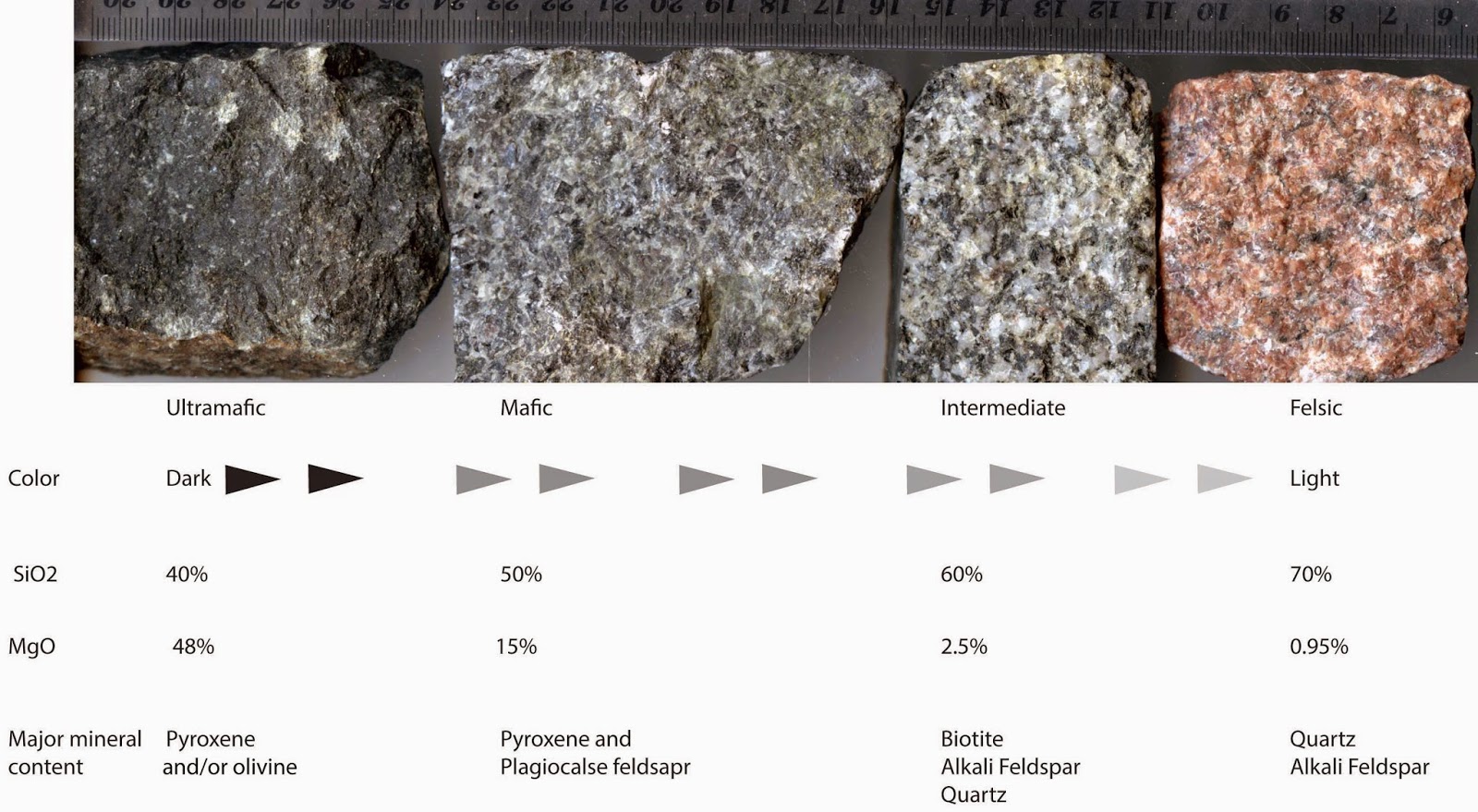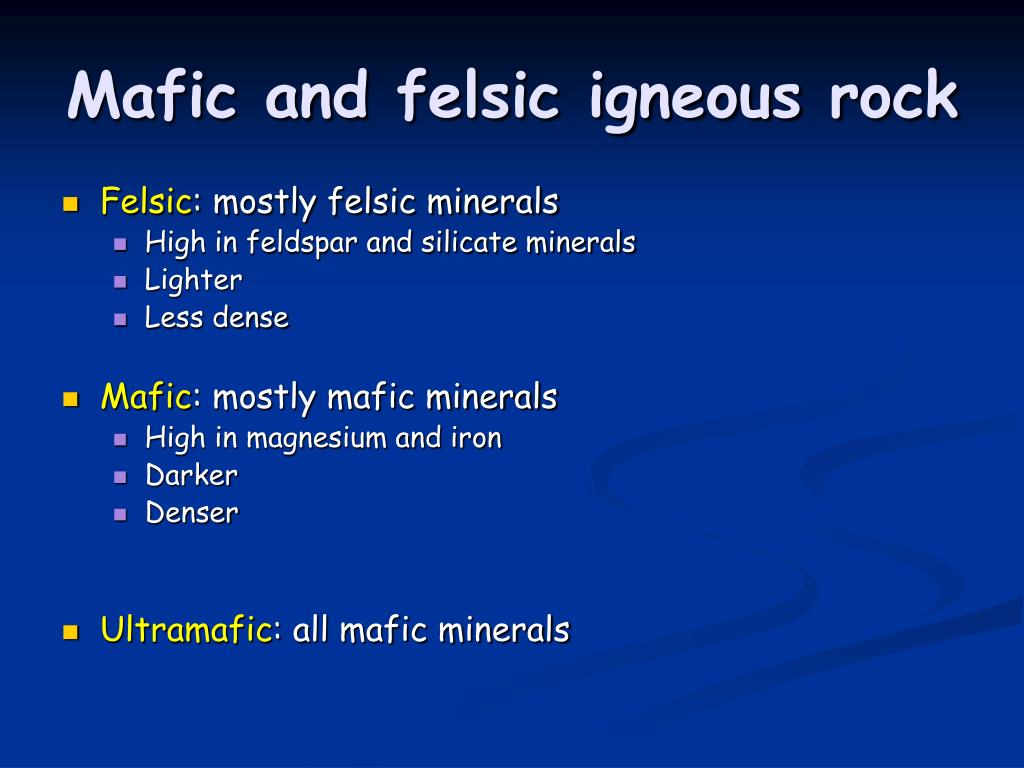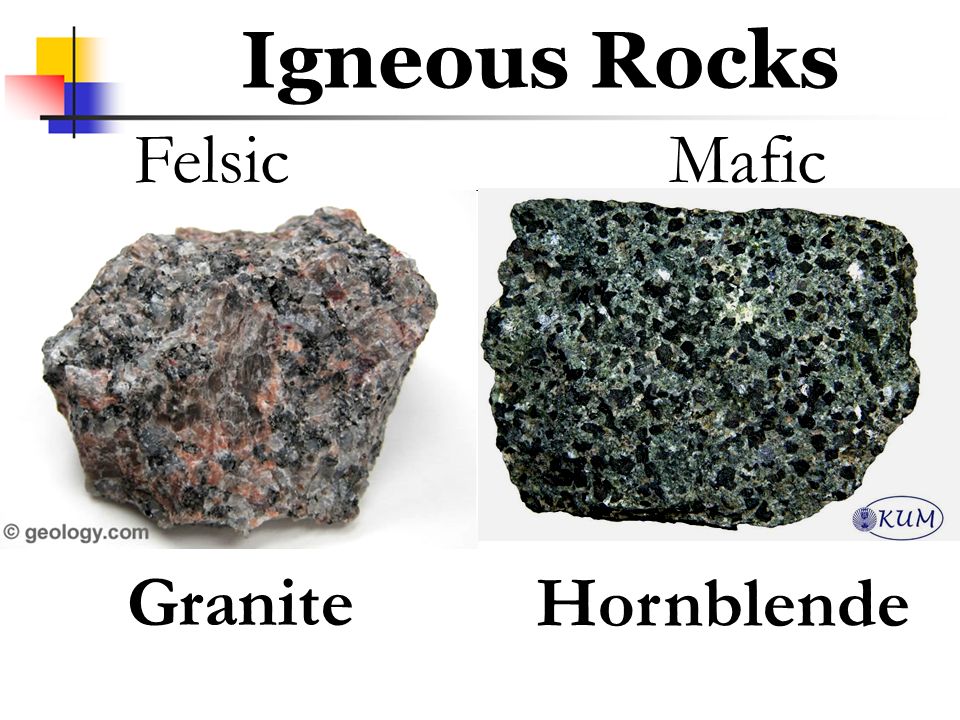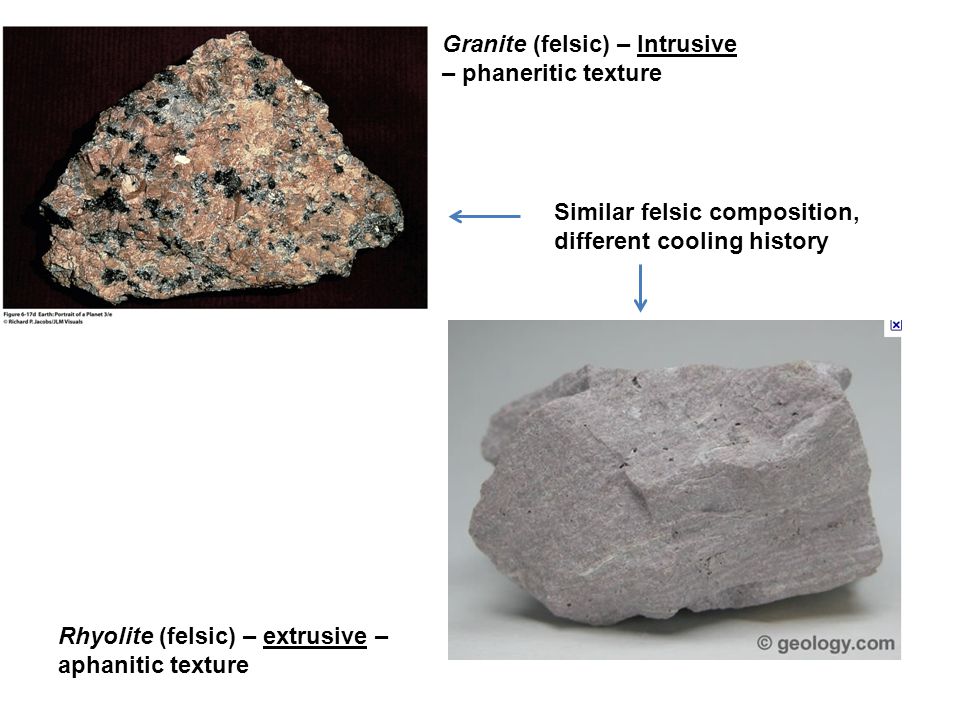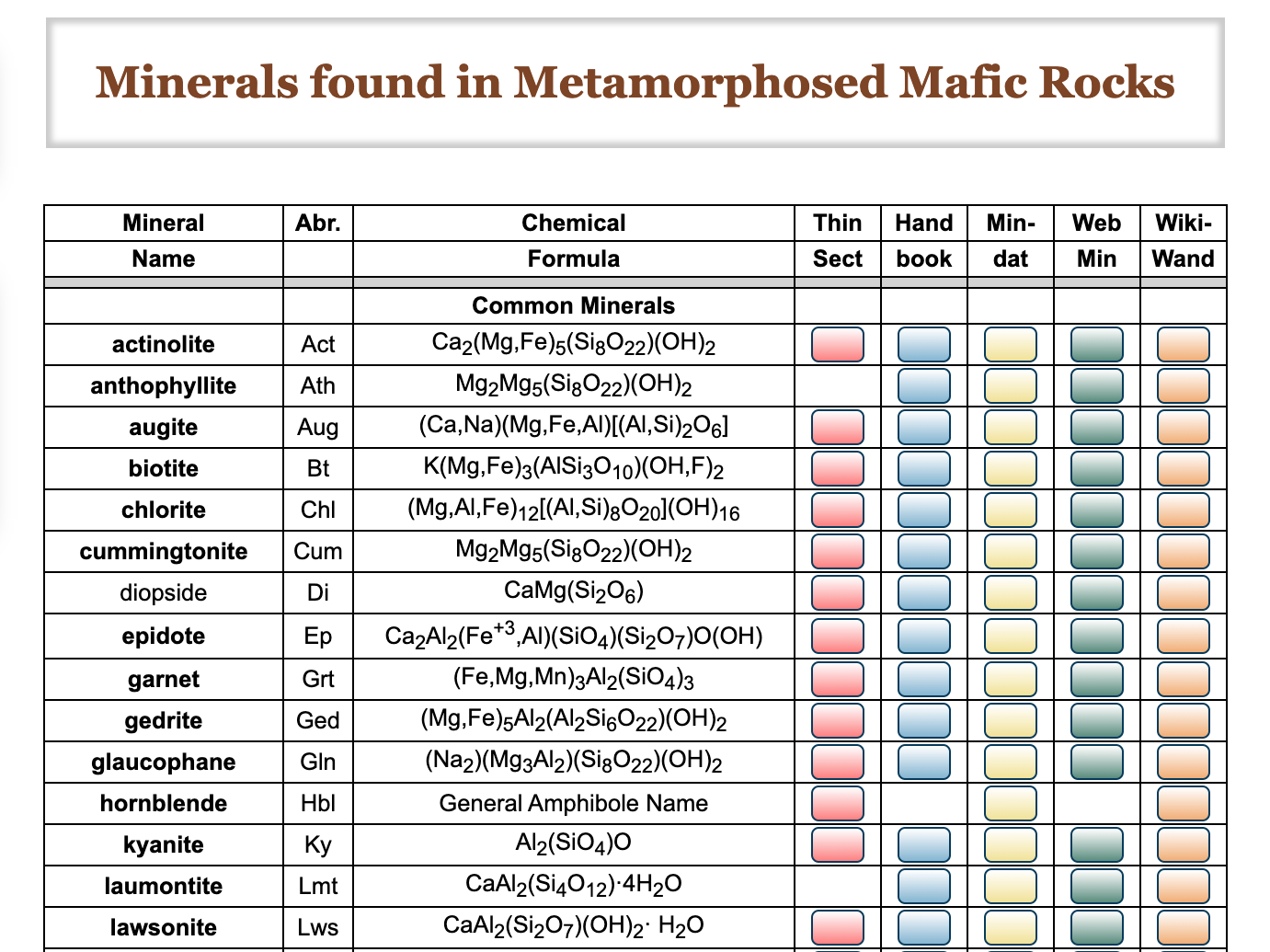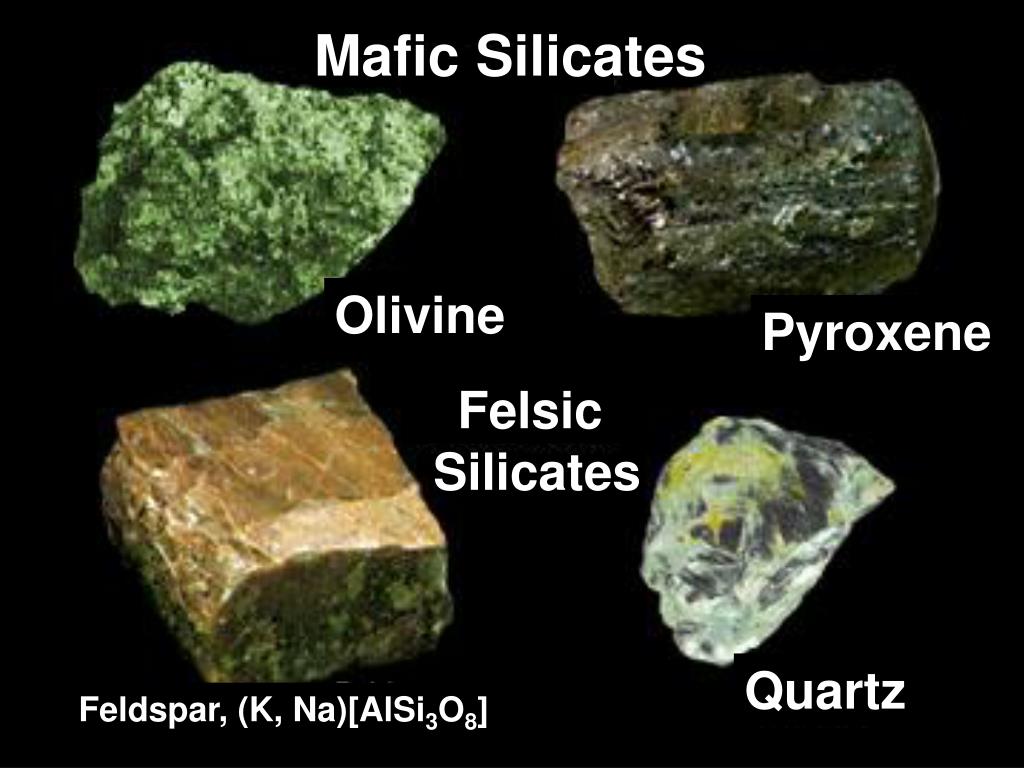How Are Mafic Minerals Different From Felsic Minerals

Earth's rocks, the very foundation of our planet, are built from minerals. Understanding their composition, particularly the crucial distinction between mafic and felsic minerals, is paramount to interpreting geological processes.
This article breaks down the fundamental differences between these two mineral groups, revealing how their contrasting chemical makeup dictates their physical properties and distribution across the globe.
Mafic vs. Felsic: A Tale of Two Compositions
The terms mafic and felsic are derived from the minerals' chemical compositions. Mafic minerals are rich in magnesium (Mg) and iron (Fe), while felsic minerals are abundant in feldspar and silica (SiO2).
This seemingly simple difference dictates a cascade of contrasting properties, impacting everything from color and density to melting point and resistance to weathering.
Chemical Composition: The Core Difference
Mafic minerals, like olivine, pyroxene, amphibole, and biotite mica, boast a high concentration of magnesium and iron. These elements are responsible for their darker coloration and higher density.
Felsic minerals, in contrast, are dominated by feldspars (like plagioclase and orthoclase) and silica (quartz). Their composition results in lighter colors and lower densities.
Physical Properties: A Direct Consequence
The disparate chemical compositions of mafic and felsic minerals directly influence their physical characteristics. Mafic minerals are typically dark-colored (black, brown, or dark green) due to the presence of iron.
They also exhibit higher densities, generally ranging from 3.0 to 3.5 g/cm³. Felsic minerals, on the other hand, are light-colored (white, pink, or light gray) and possess lower densities, usually between 2.6 and 2.8 g/cm³.
Formation Environment: Where They Reside
The formation environments of mafic and felsic minerals differ significantly. Mafic minerals tend to crystallize at higher temperatures from molten rock (magma or lava).
They are commonly found in oceanic crust and volcanic rocks, representing the initial stages of magma cooling. Felsic minerals crystallize at lower temperatures and are typically associated with continental crust and intrusive igneous rocks (like granite) that cool slowly beneath the Earth's surface.
Weathering and Resistance: Long-Term Stability
Mafic minerals are generally less resistant to chemical weathering compared to felsic minerals. The iron content in mafic minerals makes them susceptible to oxidation, leading to their breakdown over time.
Felsic minerals, particularly quartz, are highly resistant to weathering due to the strong silicon-oxygen bonds in their structure. This difference in resistance influences the formation of soils and sediments.
Examples: Identifying Key Minerals
Mafic mineral examples include olivine, a green-colored mineral found in the Earth's mantle and some volcanic rocks. Pyroxene, a dark-colored mineral common in basalt, is another key example.
Felsic mineral examples include quartz, a transparent or white mineral found in various rock types. Feldspar, including both plagioclase and orthoclase, is another abundant felsic mineral found in granite and other continental rocks.
Implications for Geological Understanding
Understanding the distinctions between mafic and felsic minerals is crucial for interpreting geological processes. The presence and abundance of these minerals provide insights into the origin, evolution, and tectonic history of rocks and regions.
For example, the dominance of mafic minerals in oceanic crust indicates its origin from mantle-derived magmas. The abundance of felsic minerals in continental crust points to a history of differentiation and reworking of crustal materials.
Ongoing Research and Exploration
Scientists continue to investigate the complex interactions and transformations of mafic and felsic minerals in various geological settings. Advanced analytical techniques, such as electron microscopy and X-ray diffraction, are used to study their crystal structures and chemical compositions at the atomic level.
This ongoing research aims to refine our understanding of Earth's dynamic processes and the formation of diverse rock types. Further exploration of mineral deposits and geological formations will undoubtedly reveal new insights into the fascinating world of mafic and felsic minerals.



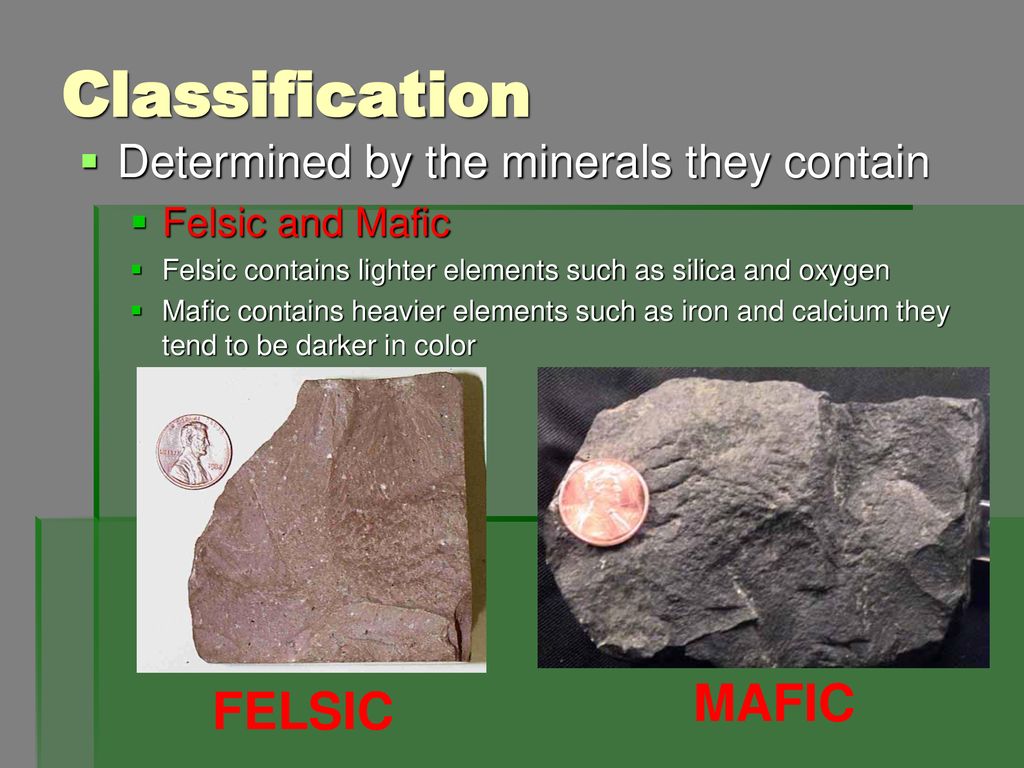
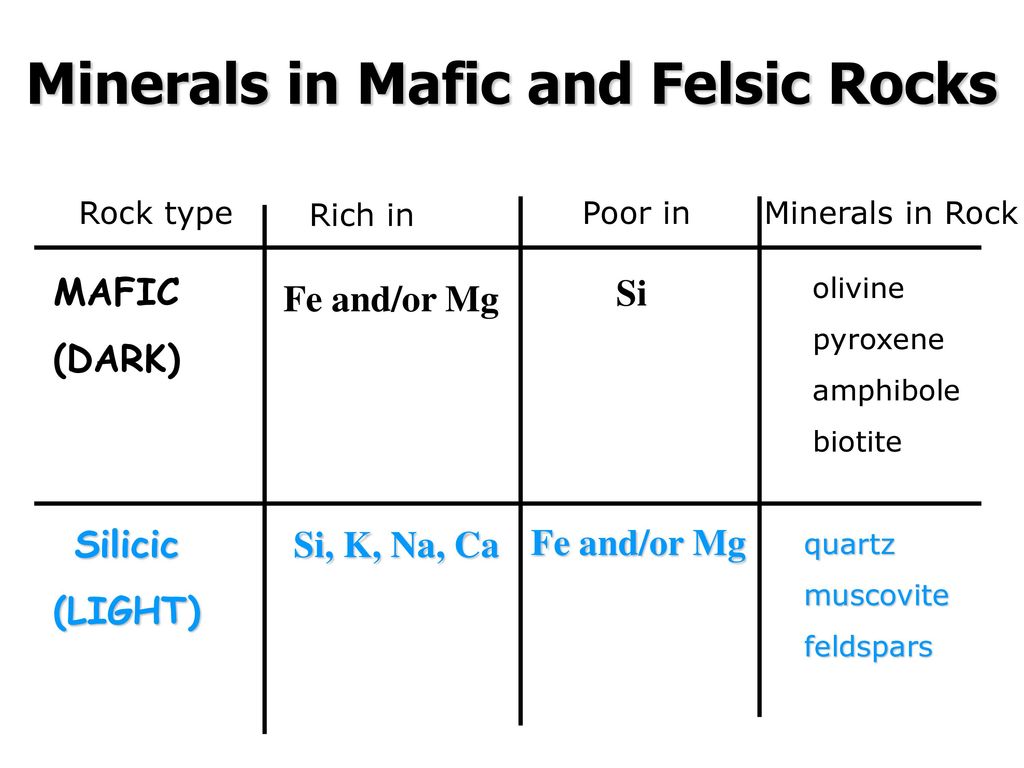
+vs.+Basaltic+(mafic).jpg)


